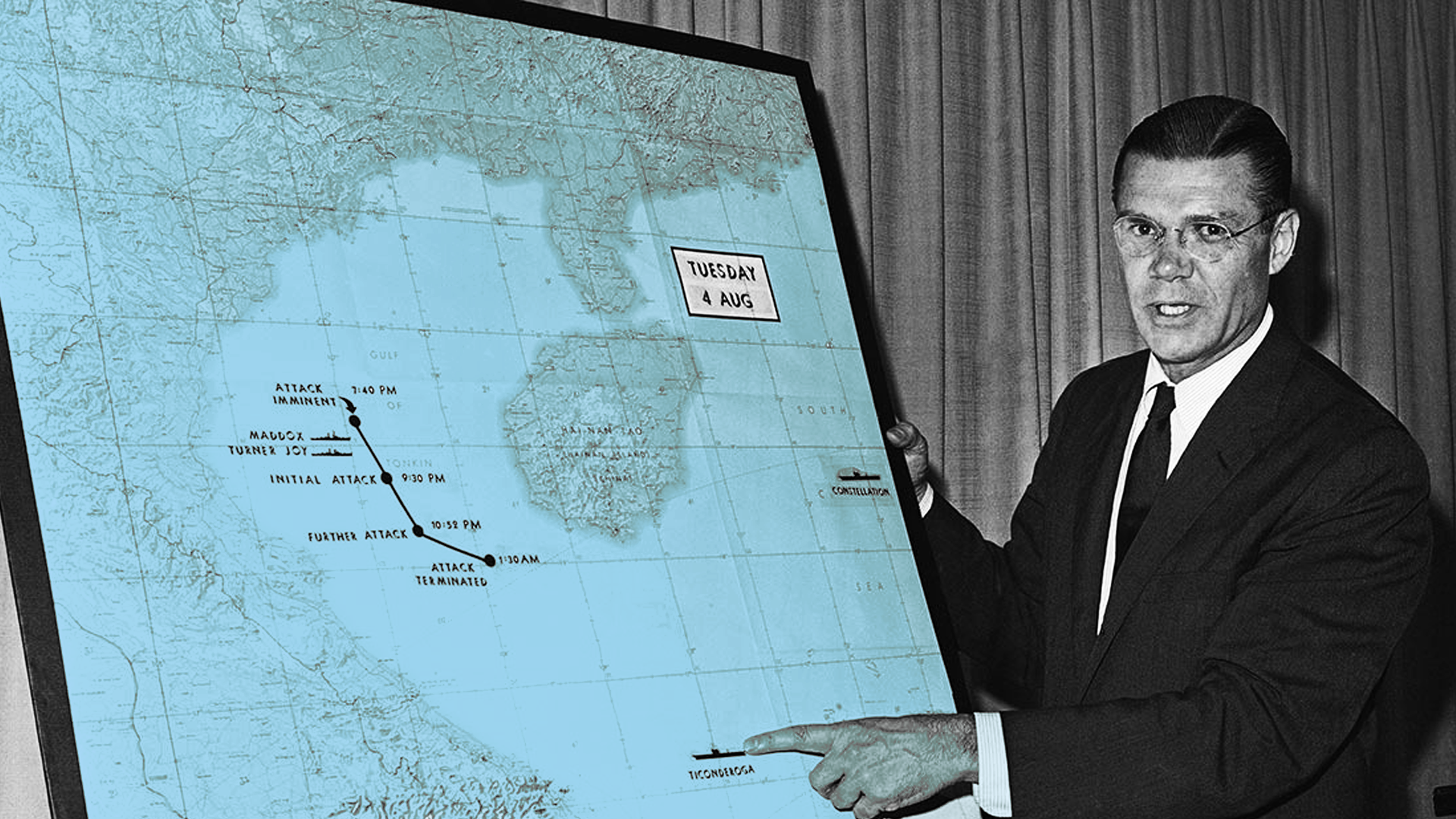Congress Passes Gulf of Tonkin Resolution

The Gulf of Tonkin Resolution gave President Johnson the power to wage war in Southeast Asia after alleged attacks on U.S. destroyers.
What Happened?
In early August 1964, two U.S. Navy destroyers, the 'USS Maddox' and 'USS Turner Joy', reported attacks by North Vietnamese patrol boats in the Gulf of Tonkin. The first incident, on August 2, was real. The second, on August 4, was murkier—possibly a case of radar error, poor visibility, and nervous sonar operators. Still, President Lyndon Johnson framed both as unprovoked aggression.
On August 7, Congress responded by passing the Gulf of Tonkin Resolution. It authorized Johnson to 'take all necessary measures' to prevent further attacks and preserve peace in Southeast Asia. The vote was nearly unanimous: 416–0 in the House and 88–2 in the Senate. But few lawmakers were given the full context—such as the fact that U.S. destroyers were supporting covert South Vietnamese attacks on the North.
Johnson presented himself as measured and reluctant, even as plans for escalation were already underway. The resolution became the legal and political foundation for Operation Rolling Thunder, a massive bombing campaign, and the deployment of hundreds of thousands of U.S. troops. The war would last another decade and cost over 58,000 American lives—and millions of Vietnamese, Laotian, and Cambodian lives.
Later investigations, including declassified documents and statements from naval officers, revealed serious doubts about the second attack. Commander James Stockdale, who flew reconnaissance that night, said there were no enemy boats—'just black water and American firepower.' Public trust eroded as Americans learned more about how intelligence had been shaped to fit policy goals.
The Gulf of Tonkin Resolution became a case study in executive overreach and the dangers of unchecked power during wartime. By the time the resolution was repealed in 1971, the damage had been done—both on the battlefield and in the American psyche.
Why It Matters
The Gulf of Tonkin Resolution showed how fear, secrecy, and vague threats can be used to justify war. It’s a warning about what happens when democratic checks break down and public debate is bypassed. The resolution helped launch a war that reshaped global politics, radicalized a generation, and forced the United States to confront the costs of empire—and the limits of power.
?
What were the reported events that led to the Gulf of Tonkin Resolution—and how reliable were those reports?
How did the resolution give the president power to wage war without a formal declaration by Congress?
What role did public trust and misinformation play in shaping support for the Vietnam War?
How did the Gulf of Tonkin incident influence future U.S. military interventions?
What lessons can we learn about war powers, accountability, and public consent from the passage of this resolution?
Dig Deeper
Learn about the international incident that escalated American involvement in the Vietnam War.
Related

Indigenous Nations Before European Contact
Long before Columbus, Indigenous nations flourished across North America. From hunters following mammoths to farmers building vast trade networks, Native peoples shaped the land—and the land shaped them.

The Voting Rights Act of 1965: Enforcing the 15th Amendment
How a landmark law transformed voting access in the South and gave real force to the promises of the 15th Amendment.

From Articles to the Constitution
The Articles of Confederation got us through a revolution—but not much more. Weak laws, no executive, and constant in-fighting forced the Founders back to the drawing board. What came next? The Constitution.
Further Reading
Stay curious!
